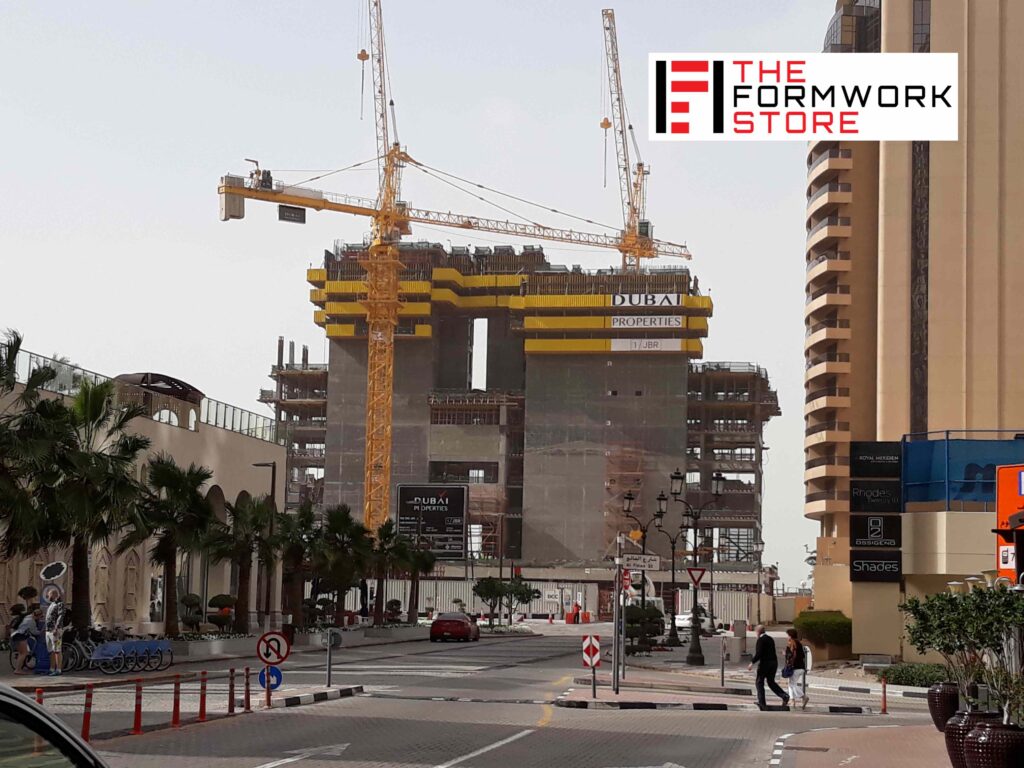Climbing Formwork for high rise RC Buildings

While using conventional formwork in a high rise type structure once one floor is complete, the contractor must then complete all of the vertical elements (cores and columns) before he can begin work on the formwork for the next floor slab. The cores in modern buildings can be complex and consume more time than columns and shear-walls, thus the core is blocking the start of work on the slab. If for example the core takes five days to cast and then the slab takes another five, then it’s a full ten days before the cycle can begin again.
The primary objective for using climbing systems is to reduce this cycle time. The concept is simple: by use of a suspended platform the core can be cast a number of floors ahead of the main slab works, meaning that after every slab is cast, the core is already in place and work can start on next slab as soon as columns are cast. By taking the previous example, but this time climbing the cores ahead, the total cycle could be reduced to 7 days easily (two days for columns, zero days for core, and five for slab).
While reducing cycle time is the main goal for using a climbing system, there are also some additional benefits to be gained through efficiencies which can reduce resources required and so decrease cost. Firstly because the equipment is lifted directly from one pouring location to the next without any lay down you are reducing handling, re-assembly and equipment is less likely to be damaged in temporary storage. This is extremely efficient use of resources particularly when crane time which is in high demand. Secondly, in this type of construction, sites are usually extremely congested and there is no place to set down bulky wall formwork when equipment is not in use. The fact that the core formwork stays in-situ above the job site helps to alleviate congestion.
Climbing formwork comes in a range of different options, there is simple crane assist jump formwork, guided rail systems which can be either crane assist or hydraulic, slip form and of course at the top end ‘fully automated hydraulic climbing systems’. Each of these options can give advantages and are appropriate in different situations In order to assess which is most suitable it is probably best to consult with a reputable specialist supplier who can advise based on complexity, height, crane resources program etc.